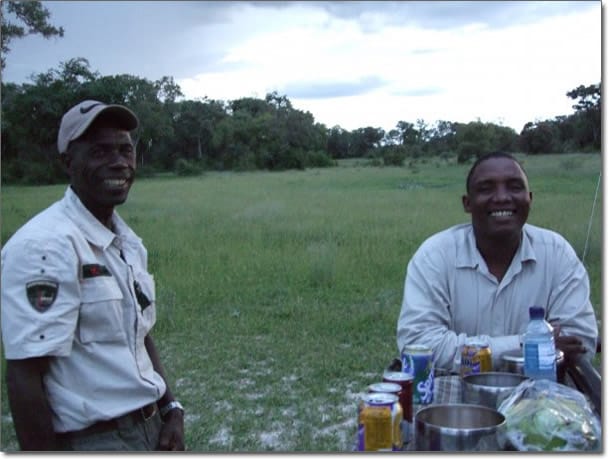One of my most exciting moments with wildlife came as I was snowshoeing at a park near my home in Colorado. There was a fresh 24 inches of snow on the ground and halfway into my trek I found cougar (mountain lion) tracks and went to work cougar tracking. It’s trail undulated quite a bit and at least twice looped around a considerable distance before coming back onto its original trail. Because of this clever habit of sneaking back on its path it is recommended to always back track rather than fore track but in my excitement I wanted to find this secretive big cat not merely see where it had been. In many places there were two sets of tracks but with all the back tracking by the cat it was likely one cougar. I continued my animal tracking adventure until I eventually popped over a hill and ravens flew up – a kill site! I could see some brown fur covered in a heap under a tree, typical cougar kill where the prey is dragged toward cover and concealed by the predator. My tracking of the cougar had paid off.
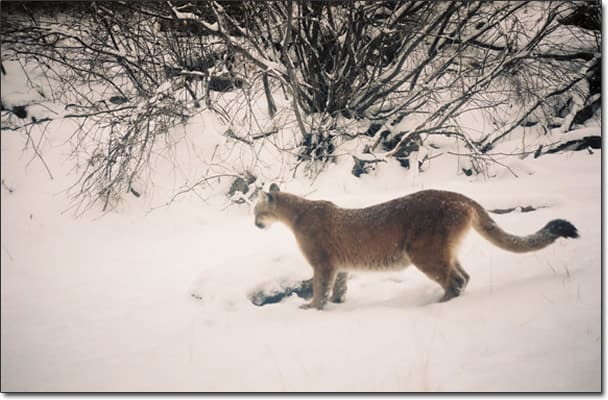
Big surprise though, this prey was not a deer – but another cougar. Twenty five yards away was an incredible picture of the event illustrated in the snow of a struggle with long claw marks made in anguish, spots of blood and then a long drag mark to his eventual resting place. His belly had been consumed as if he was a deer and an examination of his teeth showed a broken canine, likely leading to a loss of fitness for this old Tomcat who was taken down by the competition. Fresh snow is a great medium for tracking animals and one does not have to possess magical skill to do it, just determination.
Wildlife Tracking on Safari
On safari, wildlife tracking can lead you to amazing sightings as well. When in a National Park with stay on road restrictions it might be of limited value – but in areas where you can go off road it is a vital part of the safari experience. Just as in my example above you do not need the skill, the expert animal trackers and guides bring that, but you do still need the determination. Your team of experts can only perform this job if you are enthused about it, patient and determined to give it a go. Perhaps it is the lack of patience that many of us bring from our Western lives, but ironically the most expensive camps in Botswana are ones that do not use wildlife trackers as they must think their average guest will not want to spend the time and effort needed for rewarding animal tracking. Elephant tracking, African Wild Dog Tracking, Lion Tracking, and Rhino Tracking – they’re all available for you on safari if you’re patient enough to enjoy the experience.
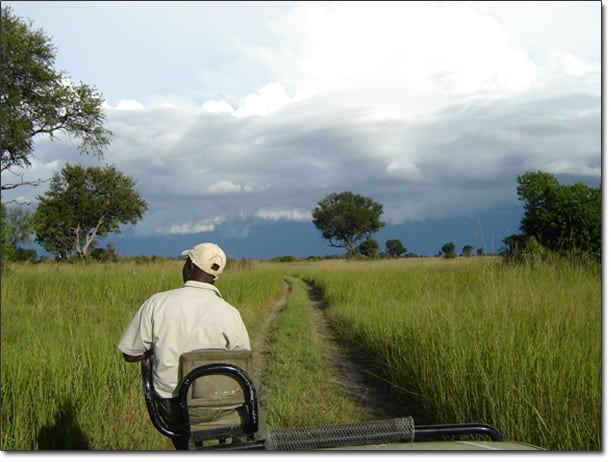
To illustrate the importance of tracking animals I will tell the tale of Celia from Brooklyn, recently returned from an early February safari in Botswana and she has been kind enough to share a few photos in addition to her personal story. Right from the start of the planning process it was clear that Celia was all about indulging in the wilderness rather than in camp. Frogs to dung beetles to elephants, this first time safari goer was ready to appreciate it all and having great guides and wildlife trackers was far more important than if Belgian truffles would be served. Based on this we selected camps where the dedication is firmly on pursuit of great wildlife, Kwara Camp, Lagoon Camp and Mapula Lodge. At Lagoon Camp the man at the front followed the spoor (the African term for wildlife tracks) daily of African wild dogs and in three days these very rare and wide ranging carnivores were located three times!
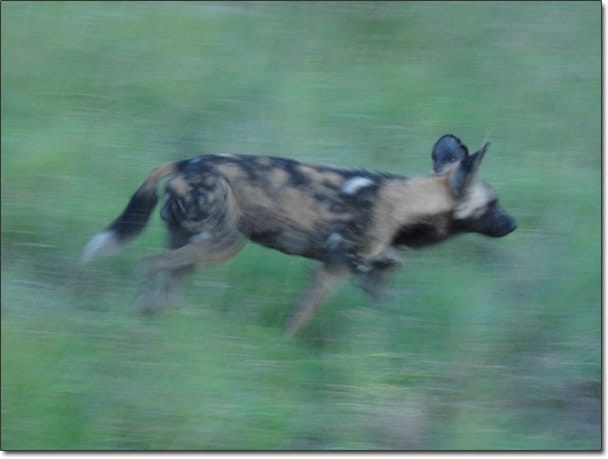
On the last game drive of a brilliant safari Celia was at my favorite camp, Mapula Lodge. One of the reasons it’s my favorite is because every guide on staff is outstanding and dedicated wildlife tracking is the standard rather than the exception. Thus, I was very pleased to hear that on this last drive they picked up lion spoor and followed until they reached a very thick area. At this point the guide, Dicks, informed the guests that they had a choice to make. They could be patient and make an attempt to track lions into this difficult area or they could simply continue with their game drive. Celia did not hesitate with her commitment to track lions and the other guests agreed. At this point one of the guests was asked to drive the vehicle so that both Dicks and Simon could go on foot and work as a team. The people in this area are predominantly river bushmen who brought with them their exceptional animal tracking skills many years ago when they left the Kalahari to settle the Okavango Delta. The other people in the area are the Bayei who befriended the river bushmen and were taught these incredible tracking skills and in turn the Bayei taught the bushmen how to mokoro (dugout canoe) and fish. These two men tracked lion pawprints for 45 minutes and Celia reports she savored the opportunity to see these artists at work, thinking their way along the trail through difficult terrain as the anticipation builds. In this case the patience paid off and a pride of lions was located! Not only that but they were hunting and although they failed in their attempts this fascinating behavior was observed. The wildlife tracking experience was a superb ending to a spectacular safari.
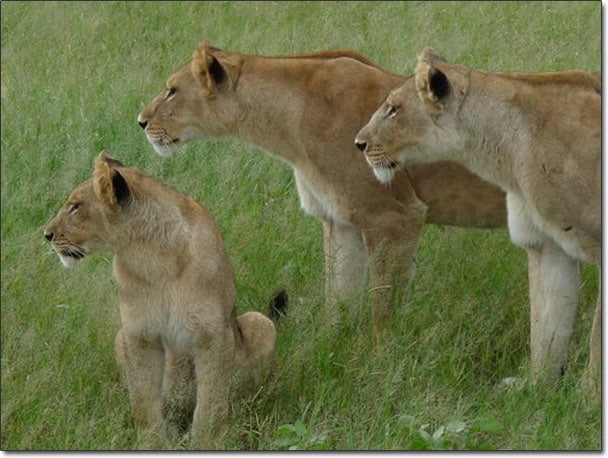
Now that’s tracking! Some people mistakenly think that when their guide leans out of the vehicle to look at some spoor and then tries to follow them for 5 minutes that it is wildlife tracking. The truth is when predators go off road, so too must you, and it sometimes takes extraordinary wildlife tracking efforts such as the one described above to find the species you most want to see. One guide who has to stay behind the wheel simply cannot duplicate such a feat in a reasonable amount of time without extreme luck. Beyond the physical effort of watching for and following spoor the animal tracker is also best prepared for the general spotting of wildlife as he does not have to focus on driving and talking to guests. On night drives he works the spotlight to locate animals and leave the guide to concentrate on driving. He helps the guide prepare the vehicle for each drive and in the case of an emergency there is a team in place. In my mind this is an invaluable position for any off road driving area to enhance your experience, it is also a very good job for a local person to have. In that way it is the perfect mix, a badly needed job that directly correlates to great value for the customer. Something important to think about when planning a safari.
